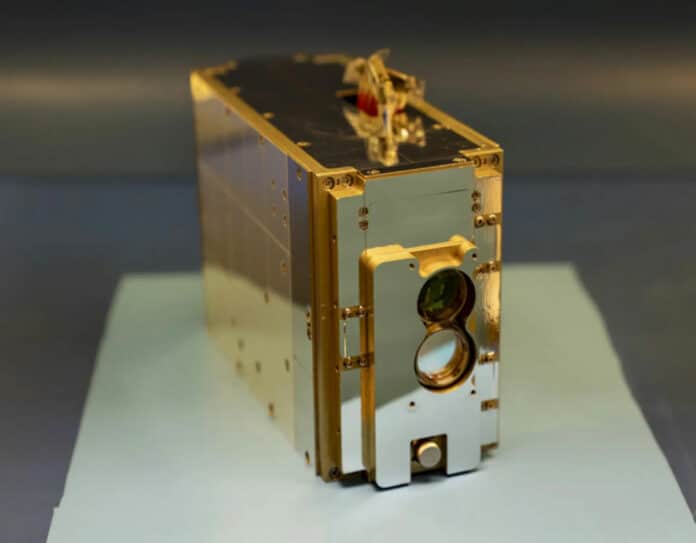A small satellite developed by engineers at the Massachusetts Institute of Technology (MIT) has set a new record for data transmission between a satellite and Earth.
MIT’s TeraByte InfraRed Delivery (TBIRD) system has delivered terabytes of data from a satellite to Earth at record-breaking rates of up to 100 gigabits per second (100 Gbps) – a rate that will transform future science missions. This data transfer rate is more than 1,000 times higher than that of the radio-frequency links traditionally used for satellite communication and the highest ever achieved by a laser link from space to ground. These record-setting speeds were all made possible by a communications payload roughly the size of a tissue box.
SpaceX’s most expensive Starlink satellite internet plan provides a downlink with speeds of up to 500 Mbps. Even the International Space Station’s data transmission tops out at around 600 Mbps; that makes TBIRD up to 200 times faster.
Laser-based space communication, however, comes with several engineering challenges. Unlike radio waves, laser light forms a narrow beam. For successful data transmission, this narrow beam requires a more precise alignment between the sender and receiver located on the ground. Though laser light can travel long distances in space, laser beams can be distorted because of atmospheric effects and weather conditions, leading to data loss. That’s why TBIRD was designed to overcome all these challenges.
The satellite integrates three key commercial off-the-shelf components: a high-rate optical modem, a large high-speed storage drive, and an optical signal amplifier, all packed into a container roughly the size of a tissue box. To deal with data loss, the team developed a new version of Automatic Repeat Request (ARQ), a protocol for controlling errors in data transmission over a communications link. It allows receivers on Earth to alert senders through a low-rate uplink signal to re-transmit any block of data that has been lost or damaged.
“If the signal drops out, data can be re-transmitted, but if done inefficiently – meaning you spend all your time sending repeat data instead of new data – you can lose a lot of throughputs,” explains TBIRD system engineer Curt Schieler, a technical staff member in Wang’s group. “With our ARQ protocol, the receiver tells the payload which frames it received correctly, so the payload knows which ones to re-transmit.”
In addition, TBIRD doesn’t bother with a gimbal for pointing at the narrow laser beam. Instead, it relies on a laboratory-developed error-signaling system for precision body pointing of the spacecraft. The system adjusts the entire satellite itself to point precisely toward the receiver. Without a gimbal, the team says, the payload can be even further miniaturized.
“We intended to demonstrate a low-cost technology capable of quickly downlinking a large volume of data from LEO to Earth in support of science missions,” says Wang. “In just a few weeks of operations, we have already accomplished this goal, achieving unprecedented transmission rates of up to 100 gigabits per second. Next, we plan to exercise additional features of the TBIRD system, including increasing rates to 200 gigabits per second, enabling the downlink of more than 2 terabytes of data – equivalent to 1,000 high-definition movies – in a single five-minute pass over a ground station.”
